Xanax Oral: Uses, Side Effects, Interactions, Pictures, Warnings & Dosing
Also tell them if you smoke, drink alcohol, or use illegal drugs. While Xanax addiction cannot be completely cured — nor can any dependency on drugs or alcohol — treatment can help affected individuals address their behavior and return to a healthy lifestyle. Recognizing Xanax addiction signs and symptoms can help you know when to seek treatment for yourself or a loved one. Xanax addiction can be serious and affect a person’s mood, behavior and physical characteristics. Having abused Xanax a few times, some people might attempt to take the drug under different circumstances or at different times.
WHAT WE TREAT
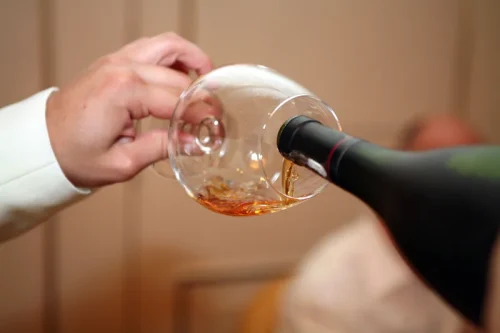
If you have trouble opening medication bottles, ask your pharmacist if they can put Xanax in an easy-open container. They also may be able to recommend tools that can make it simpler to open lids. If you drink alcohol, it’s best to avoid drinking it while taking Xanax. Alcohol and Xanax can reduce the activity of your central nervous system (CNS). So consuming alcohol with Xanax can lower the activity further. Taking Xanax with the herb St. John’s wort may lower the level of Xanax in your body.

Xanax side effects
They will also help you to understand what kind of language will be the most effective to get the person into treatment for Xanax addiction. Xanax abuse can cause a number of disorienting symptoms in the user, including sleepiness, dizziness, difficulty concentrating, and memory problems. Because of these effects, you want to approach a person who is abusing it while they are sober.
- If your prescription label is hard to read, talk with your doctor or pharmacist.
- This can make a withdrawal from Xanax difficult and unpleasant.
- Flumazenil is a benzodiazepine antagonist that can be given intravenously (IV) as an antidote in the emergency setting to help reverse the effects of a benzodiazepine overdose.
DSM-V Criteria for Xanax Addiction Severity (Mild, Moderate, Severe)
Do you have friends or family members who are addicted to Xanax? Xanax addiction is becoming more prevalent in today’s world, with increasing instances of panic and anxiety disorder. A controlled substance, Xanax is the type of drug that has a high potential for abuse and addiction, which are different problems. Xanax (generic name alprazolam) is a benzodiazepine (benzo), and it is a central nervous system (CNS) depressant.
Dependence can lead to withdrawal symptoms if you suddenly stop taking the drug. For more information, see the “Xanax dependence and withdrawal” section above. With misuse, a drug is taken for a purpose or in a way that a doctor has not prescribed. Misuse can lead to addiction, which is when you’re unable to stop taking a drug, even though it may be causing harm. To learn more, see the “Xanax misuse and addiction” section above. Xanax has a boxed warning for the risk of dependence and withdrawal.
What is the most important information I should know about Xanax withdrawal?
This phenomenon is described as tolerance and, as a result of developing tolerance to Xanax, you may end up taking larger and larger amounts. If you or someone you care about is struggling with an addiction to Xanax, you don’t have to fight the battle alone. Treatment centers provide those suffering from xanax addiction the support they need to find and maintain recovery. Alprazolam has been reported to cause withdrawal and sedation in the newborn and should be avoided during pregnancy and lactation. As a general rule, exposure to any type of benzodiazepine during the first trimester should be avoided.
DRUGS AND MEDICATIONS CENTER

After a period of regular use, it is best to slowly stop the medication under your doctor’s direction. Withdrawal symptoms can begin quickly in some people, even after just a week or two of benzodiazepine use. Studies have shown that individuals with a history of alcohol or opiate use prefer the rewarding effect of Xanax over other benzodiazepines, such as oxazepam or chlordiazepoxide. However, you can become addicted to Xanax even if you take it exactly as prescribed by your doctor.
How to Recognize and Treat Xanax Addiction
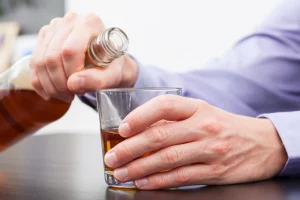
Different doctors have different opinions on these matters, and as these are medical opinions, not crimes, by enforcing one over the other, the federal government is trying to influence the practice of medicine. Itself a crime, according to 42 USC 1395, which makes clear that the authority to regulate the practice of medicine is reserved to the states. The only people who could arrest them are other federal agents, and they’re too busy helping the DEA arrest doctors to care.
- If either of these medications is not helping or causes unmanageable side effects, a healthcare provider may switch you to another anxiety medication.
- The country’s treatment centers have seen many long-time Xanax users with depressive symptoms.
- Close medical supervision will be required for these special cases.
- Benzodiazepines such as Xanax are included in guidelines for managing panic disorder.
Xanax XR works over about 24 hours, so you’ll likely take a dose once per day. Your doctor may prescribe Xanax XR if once-daily dosing is more convenient for you. They may also prescribe this form if your panic disorder symptoms come back or worsen between doses of immediate-release Xanax. There are also encouraging case reports and case series with the use of other antiseizure medications to help alleviate symptoms of benzodiazepine withdrawal. There are 3 case reports suggesting that valproate may be effective for the treatment of sedative-hypnotic withdrawal, but a double-blind, placebo-controlled study failed to replicate the results (Rickels et al., 1999). Xanax is a prescription medication that treats conditions such as anxiety and panic disorder.
- Publicado en Sober living
Sober and bored? It’s Normal Here’s What To Do About It.

It’s a way to care for yourself by committing to a practice that releases positive, mood-enhancing endorphins and alleviates stress. Finding a new activity and hobby such as working out can provide something to look forward to each day. Find a support group and make contact with them regularly.
How to crush your No-Drinking Days!
- Additionally, I examine the way mental and physical health as well as our relationships with others impact the reasons people drink and their role in maintaining sobriety long-term.
- And the more I felt them, the more intense and blinding they would get.
- It’s released when we do things that are rewarding or pleasurable, which, in turn, encourages us to repeat those behaviors.
- Choosing a new hobby to occupy your time is not always easy.
Drinking alone regularly and excessively could be an early sign of alcohol use disorder (AUD). If you are aware that you have a problem with alcohol, there are several available treatment options and methods to help you. Some people take medication to treat alcoholism and other treatment methods simultaneously to stay sober. While inpatient care may be ideal for someone experiencing severe alcohol addiction, outpatient care may be enough for someone who needs professional help without constant supervision. BetterHelp offers affordable mental health care via phone, video, or live-chat. However, if you find yourself drinking alone regularly or excessively, it could signify a more serious problem.
Alcohol artificially boosts serotonin and dopamine in your brain.
By implementing these strategies, you can effectively overcome boredom drinking and maintain a healthier lifestyle. Replacing boredom drinking with enjoyable and fulfilling activities can help you maintain a healthier lifestyle and improve your mental health. Some alternative activities to consider include physical exercise and outdoor activities, creative pursuits and learning new skills, and volunteering and community involvement.
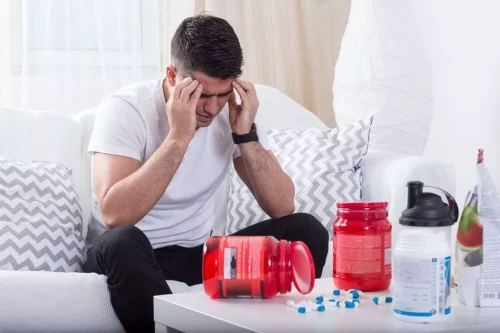
Learn to say NO

So, when we’re bored and our brain is looking for that dopamine hit, it can often recall that alcohol was a past source of reward. That’s why we might find ourselves reaching for a drink when we’re simply sitting and not doing much. If you’re having trouble making this change alone, Sunlight Recovery offers programs like individual therapy, group therapy and medical detox to help you with drug and alcohol treatment. Boredom is a natural state or emotion that’s part of the spectrum of things we feel as humans, and we all experience boredom in different forms and at different times. Always have a list of people that support your recovery available. This provides quick access to those who empower you on your recovery journey.
- It’s the fine line at which point a person may cross over from casual drinking into having an alcohol use disorder.
- It’s particularly therapeutic to find something to do with your hands.
- This cycle can lead to unhealthy consumption patterns when feeling anxious or overwhelmed.
- But I didn’t know what to do with them besides feel them.
The Role of Habit in Boredom Drinking
- Reframe supports you in reducing alcohol consumption and enhancing your well-being.
- But if you do crave some escapism, there are many ways to switch off without alcohol that won’t leave you suffering afterwards.
- If our body perceives a harmless situation as dangerous, we start to experience increased levels of stress and anxiety.
- Depending on the severity of the symptoms, your doctor may even recommend medication to help treat depression and anxiety.
Fried and overly sugary foods will also artificially spike your dopamine levels and cause your brain to overcorrect, leaving you feeling irritable, depressed, and cranky. These are all things you’re trying to overcome from drinking. Volunteering is a great https://ecosoberhouse.com/ way to reconnect with your community. Helping others actually boosts our own mental health and feelings of self-worth. Plus, it helps us with our emotional sobriety and wellness. On the one hand, you have no idea what you’re supposed to do with yourself.
If you quit drinking and experience any new or worsening mental health symptoms, please consider therapy. Counselors can help patients overcome alcohol addiction in healthy ways. Traditional therapy can help unpack any mental or emotional traumas that trigger the tendency to drink alone. drinking out of boredom Drinking is a social habit; it’s one of the many ways people, especially young adults, celebrate occasions or have fun. However, there’s a difference between having a couple of drinks with peers and solitary drinking. There’s a connection between consuming alcohol and boredom.
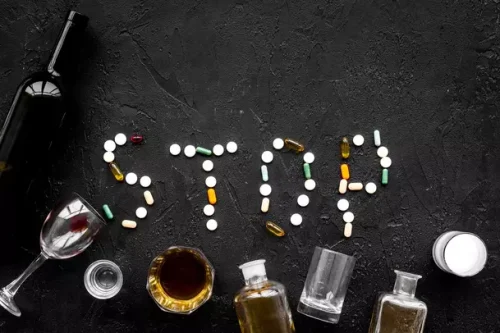
First, a Quick Explainer on Dopamine
The alternative is either a stale, lackluster lifestyle or one where the only entertainment is destructive addictive behavior. Take responsibility and choose the more creative and productive path. If you are an adult and active yet bored with work or mundane, tedious activities, push yourself to discover new adventures or make new friends. If your job represents a form of security but is painstakingly boring, explore new possibilities for employment even if you never fill out an application or get a job interview. Strong, positive energy coupled with the right attitude is important to infuse into your child a new productive program.
Want To Be More Mindful When You Meditate? Blast Your Brain With Ultrasonic Waves
This article will discuss what you need to know about drinking alone and when to see professional help. You might find that a certain feeling is not as bad as you think it is, once you just let it be there and be felt. But if you do crave some escapism, there are many ways to switch off without alcohol that won’t leave you suffering afterwards. There’s a stigma around both loneliness and drinking too much.
- Publicado en Sober living
A Handbook on the Interplay Between Post-Traumatic Stress Disorder and Alcoholism PCP The Perry Clayman Project
The depth manipulation presented target words in a contextual sentence, or narrative, while the shallow presentation simply asked for a visual recognition judgment (upper- or lower-case letters). After alcohol, both groups performed similarly in deep and shallow conditions however, before alcohol, more words were recalled from the deep context than the shallow. Alcohol is known to affect encoding [57] therefore some may consider a greater drop in performance for deeply encoded items, compared to shallow, following alcohol consumption to be surprising. It may be that deeply encoded items, said to have a stronger memory trace [58], would be more impervious to the effects of alcohol on free recall.
While panic attacks on their own are not dangerous, for someone with PTSD, they can induce intense fear, anxiety, and flashbacks. Struggles like these are the reality for those of us living with post-traumatic stress disorder (PTSD). It’s a condition in which life becomes a daily struggle to find a semblance of stability in the midst of persisting traumatic memories.
Effective Treatment Approaches For Co-Occurring Disorders: PTSD and Alcohol Addiction
While alcohol initially offers a sense of relief, it eventually compounds the problem, trapping individuals in a cycle of trauma, alcohol usage disorders, and deteriorating mental health. And of course, if someone is using alcohol to mask the symptoms of PTSD, that means they may go longer without realising they have PTSD, so the root cause of the symptoms goes untreated. In a study of mostly female college students, symptoms of posttraumatic stress explained 55% of the variance in alcohol use (Edwards, Dunham, Ries, & Barnett, 2006). Another study found that students with PTSD showed a more hazardous pattern of substance misuse than other students, even those meeting criteria for other diagnoses (McDevitt-Murphy, Murphy, Monahan, Flood, & Weathers, 2010). Some have speculated that alcohol use among individuals with PTSD is a form of “self-medication” (Leeies, Pagura, Sareen, & Bolton, 2010) and this may be true for some college students as well (Read, Merrill, Griffin, Bachrach, & Khan, 2014). These analyses shed light on processes that may underlie “self-medication” of PTSD symptoms.
National Institute on Alcohol Abuse and Alcoholism (NIAAA)
Although an estimated 70% of adults in the United States will experience at least one traumatic event in their lifetime, only 20% will go on to develop PTSD. The disparity between those exposed to traumatic events and others who develop the disorder may be based on the level of trauma experienced or what are whipits possibly the stigma around seeking professional help, which hides the reality of this statistic. Traumatic events may be emotionally or physically harmful, or even life-threatening. The consequences of being exposed to traumatic events include mental, physical, social, and spiritual well-being effects. Frequency of alcohol-induced blackout was assessed in both samples using the blackout item from the 10-item Alcohol Use Disorders Identification Test (AUDIT) (Saunders et al., 1993). The AUDIT has been validated as a measure of problematic alcohol consumption in multiple countries (Saunders et al., 1993) and among young adults in college (Kokotailo et al., 2004).
Coefficients are presented in unstandardized and standardized form, using standardized coefficients as indices of effect size. (A, B) line graphs showing between control and MBO group mean accuracy (%) for freely recalled words in the depth of encoding task, both before and after ingesting alcohol. (A) displays data for deep and shallow conditions collapsed across delay, whereas (B) shows the differences between immediate and delayed recall conditions, collapsed across deep and shallow. Because we are interested in support for the null hypothesis, we include equivalent Bayes Factors (K) for all tests conducted [48]. For all three tasks we compared each individual participant’s sampled mean difference (z scores) between before-alcohol and after-MBO conditions to our resampled test distributions to verify precisely how many participants showed significant memory deficits in each task.
Defining Post-Traumatic Stress Disorder
By retraining your brain to embrace positive actions during these times, you pave the way for healthier habits. One of the most crucial aspects of this journey is to eliminate any sense of shame. We know that this can be difficult, especially if you have thought negatively about your drinking for a long time, but it is an important step. Recognise that this is the first step towards an incredibly empowering life decision. Understanding that problematic drinking exists along a broad spectrum can empower people to seek help proactively.
Finally, AUD and PTSD are two of the most common mental health disorders afflicting military service members and veterans. As such, continued research on the development of effective screening, prevention and treatment interventions for service members and veterans is critically needed. Two studies featured in this virtual issue analyzed extensive cross-sectional data to discern the complex effects of race and ethnicity on AUD and PTSD. Werner and colleagues (2016) utilized a large dataset of almost 4,000 women how to recover from being roofied to examine comparative differences in alcohol use patterns, AUD prevalence, and the relationship between trauma and AUD among European American (EA) and African American (AA) women.
Prolonged Exposure (PE)
The formula was designed to dose each participant with enough alcohol to reach a Blood Alcohol Content percentage (BAC) of 0.06%, estimated at consistent intervals throughout testing from breath alcohol content (BrAC). If you have PTSD, you may have trouble falling asleep or problems with waking up during the night. You may «medicate» yourself with alcohol because you think it’s helping your sleep. Furthermore, the environment at PCP is designed to promote recovery by offering continuous professional support and therapy. This helps patients not only overcome their addiction but also deal with the underlying trauma that might contribute to their substance use. The key is to help one confront and gradually diminish fear and avoidance behaviours related to PTSD.
Exclusion criteria included being under the age of 18, possibility of pregnancy, use of prescribed medication that may interact with alcohol (excluding the contraceptive pill), or previous substance abuse problems. Participants were asked to avoid alcohol for 24-hours and food for between 3 and 4 hours before the study. For this reason, alcohol use problems often must be part of the PTSD treatment. If you have PTSD, plus you have, or have had, a problem with alcohol, try to find a therapist who has experience treating both issues.
It generally involves a comprehensive approach, including various therapies, support groups, and healthy coping mechanisms. Set limits, be aware of your triggers, and recognize when it’s becoming a coping mechanism. Healthy coping mechanisms offer a lifeline through alternative paths to relief of PTSD symptoms. From mindfulness practices to therapeutic interventions, the journey toward healing involves reclaiming the semblance of normalcy that trauma seeks to unravel. The National Institute on Alcohol Abuse and Alcoholism explains this phenomenon as the brain’s attempt to quickly adjust to alcohol’s celebrities with fetal alcohol syndrome induced positive effects to maintain balance. When the buzz wears off, we may feel more restless and anxious than we did before we drank.
- We employed a free recall task as a baseline for memory retrieval performance, and a serial recall task to assess memory for events in their order of occurrence [36].
- While these experiences may be scary in the moment, you can control and even prevent them with the right treatment plan.
- In summary, alcohol impaired both groups of participants in free and serial recall tasks to a similar extent.
- For additional review of the two papers addressing behavioral and pharmacological treatments for comorbid SUD and PTSD, refer to Norman and Hamblen (2017).
- The green arrows highlight the design for the analysis of the MBO group data only.
- They can provide personalized guidance, therapeutic interventions, and a roadmap to recovery tailored to your unique journey.
Up to a third of those who survive traumatic accidents, illness, or disaster report drinking problems. Alcohol problems are more common for those who experience trauma if they have ongoing health problems or pain. Finally, two studies in this virtual issue focus on military personnel and veterans.
1. Participants and Procedure
It has been found to reduce alcohol consumption in individuals with alcohol use disorders and may also help alleviate PTSD symptoms. Documented evidence related to Vietnam veterans displays a solid relationship between experiencing a traumatic event, developing PTSD, and subsequent alcohol addiction. According to research, almost 60% to 80% of veterans who sought PTSD treatment also reported problems with alcohol misuse. Seeking treatment for both at the same time is encouraged, since they tend to feed off each other. Unfortunately, both alcohol usage disorders and alcohol withdrawal can intensify the symptoms of PTSD, so support during the detox process will be essential to increase the effectiveness of any treatment. Given that PTSD may contribute to worse emotion dysregulation and that emotion dysregulation may contribute to substance misuse, we aimed to explore the role of emotion dysregulation as a mechanism explaining the relationship between PTSD and alcohol misuse.
For those suffering from complex PTSD and alcohol abuse, integrated treatment approaches work best. It’s because they address both conditions simultaneously to ensure complete recovery. It is crucial for individuals, especially military veterans and those with substance use disorder, to prioritise seeking treatment for both PTSD and alcohol dependency concurrently. Various traumatic events in history, such as combat threats, life-threatening accidents, and sexual abuse, have significantly contributed to the development of PTSD and alcohol addiction.
Participants responded to the item, “How often during the last year/month have you been unable to remember what happened the night before because you had been drinking? ” Response options were never (0), less than monthly (1), monthly (2), weekly (3), and daily or almost daily (4). The time frame used for Sample 1 was past year, and the time frame used at each assessment for Sample 2 was past month. Questions about blackouts during routine medical visits could serve as an important simple screen for the risk of alcohol-related harms. In sum, we found evidence for reduced performance after-MBO compared to before-alcohol in our MBO group in two of the three tasks (serial recall and depth of encoding tasks). A medication noted for its potential to treat both disorders is topiramate.
- Publicado en Sober living
Alcohol Facts and Statistics National Institute on Alcohol Abuse and Alcoholism NIAAA
A number of health conditions can often go hand in hand with AUD. Common mental health conditions that co-occur with AUD are depressive disorders, anxiety disorders, trauma- and stress-related disorders, other substance use disorders, and sleep disorders. Studies show that people who have AUD are more likely to suffer from major depression or anxiety over their lifetime. When addressing drinking problems, it’s important to also seek treatment for any accompanying medical and mental health issues.
Make time for self-care
Admitting a loved one has a problem with alcohol can be painful for the whole family, not just the person drinking. There is help and support available for both you and your loved one. Many drinking problems start when people use alcohol to self-soothe and relieve stress (otherwise known as self-medicating). demi lavato age Getting drunk after every stressful day, for example, or reaching for a bottle every time you have an argument with your spouse or boss. UCS Healthcare frequently treats alcohol and mental health co-occurring disorders, and we can help you come up with a customized treatment that works for you.
When your teen has a drinking problem
Alcohol-related problems—which result from drinking too much, too fast, or too often—are among the most significant public health issues in the United States. In some people, the initial reaction may feel like an increase in energy. But as you continue to drink, you become drowsy and have less control over your actions. You may also want to see if other family members and friends want to be involved. This can depend on several factors, such as how serious the situation is or how private the person may be.
Types of Behavioral Treatments
While work, relationship, and financial stresses happen to everyone, an overall pattern of deterioration and blaming others may be a sign of trouble. Experiencing repeated legal problems on account of your drinking. For example, getting arrested for driving under the influence or for drunk and disorderly conduct. Repeatedly neglecting your responsibilities at home, work, or school because of your drinking. For example, performing poorly at work, flunking classes, neglecting your kids, or skipping out on commitments because you’re hung over. The NIAAA Alcohol Treatment Navigator is another useful tool you can use to find treatment options in your community.
How does alcohol impact women differently?
BetterHelp can connect you to an addiction and mental health counselor. Find 8 tips below for how to balance supporting the positive health behaviors of your partner, while also taking care of yourself. Sponsors help new members work on the 12 steps toward sobriety and offer accountability.
The Best Medical Alert Systems Chosen by Our Testers
It’s important to have sober friends who will support your recovery. Try taking a class, joining a church or a civic group, volunteering, or attending events in your community. Write your drinking goal down and keep it where you will frequently see it, such as on your phone mirtazapine interactions with alcohol or taped to your refrigerator. Distance yourself from people who don’t support your efforts to stop drinking or respect the limits you’ve set. This may mean giving up certain friends and social connections. The current small downturn in alcohol consumption is welcome.
Understand that recovery is a journey and not necessarily a one-time goal. Children who grow up with a parent with AUD are more likely to misuse alcohol themselves later in life. They’re also at a higher risk for other challenges, including difficulties forming close relationships, lying, and self-judgment. If a does drinking alcohol affect your gallbladder parent has AUD, a child may experience excessive stress because they don’t know what mood their parent will be in from day to day. Children may no longer be able to rely on the adult with AUD, which can place undue pressures on them. They might also be at risk for other forms of physical and emotional violence.
Overcoming AUD is an ongoing process—one that can include setbacks. You’ll soon start receiving the latest Mayo Clinic health information you requested in your inbox. Some agencies and organizations offer treatments at no cost.
Letting others know about your choice to stop drinking may help motivate you to stick with your decision. From month-long sobriety challenges to the Sober Curious movement, more and more people are taking a closer look at the role alcohol plays in their lives. Explore Mayo Clinic studies testing new treatments, interventions and tests as a means to prevent, detect, treat or manage this condition.
- Take the assessment and get matched with a therapist in as little as 48 hours.
- Theories suggest that for certain people drinking has a different and stronger impact that can lead to alcohol use disorder.
- Researchers say these hopeful findings are significant because they might inspire people to keep attempting recovery even after they endure multiple relapses.
- If your goal is to reduce your drinking, decide which days you will drink alcohol and how many drinks you will allow yourself per day.
The important thing is to remain engaged in whatever method you choose. Below are samples of e-health tools developed with NIAAA funding. Each of these fee-based tools has a research base that shows its potential to help people cut down or quit drinking. How does the program or provider handle a return to drinking?
Healthcare professionals diagnose alcohol use disorder using criteria from the Diagnostic and Statistical Manual of Mental Disorders, 5th ed. It can have extreme effects on people’s personal and professional lives, even in mild cases. As a result, overcoming guilt and negative self-talk is vital.
- Publicado en Sober living
Overview of Drugs Overview of Drugs
Dentist anesthesiologists and oral maxillofacial surgeons have advanced training and employ more sophisticated techniques in procedural sedation and general anesthesia. They require additional medications that will be addressed later in this review. Table 1 summarizes the drugs that are essential in all offices and differ only in the route of administration for the injectables. Epinephrine may be used as a secondary measure if atropine and temporary heart pacing don’t improve hemodynamic stability. Among other actions, epinephrine stimulates beta1 receptors, causing cardiac stimulation, which in turn increases the heart rate. In the third type of mechanism, which is peculiar to steroid hormones and related drugs, the steroid binds to a receptor that consists primarily of nuclear proteins.
thoughts on “List of Emergency Drugs & Their Doses”
The problem with upping the dosage of drugs to maintain a high is that eventually, the addict overdoses. After each crisis, the baseline for “normal” interest rates gets lower and lower. Higgs argued that during times of national emergency, such as wars or severe https://sober-house.net/alcoholism-wikipedia/ economic downturns, governments expand their authority and intervention in the economy, often justified by the need to address the crisis. After the crisis passes, the government eases the intervention, but it never returns to the “normal” before the emergency.
Financing and practice organization
Because of the drug’s vasodilatory effects, be sure to institute continuous blood-pressure monitoring. While this guide provides an overview of their uses, the dosages mentioned are for informational purposes only and should never be used can i attend a meeting online or by phone for self-treatment. In an emergency, always call emergency services or seek immediate medical attention. Before using epinephrine, tell your doctor if any past use of epinephrine injection caused an allergic reaction to get worse.
- An EUA can only be granted when no adequate, approved, available alternatives exist, and when the known and potential benefits outweigh the potential risks.
- Several authors disclosed ties to medical device companies, including Element Science, which manufactures the studied P-WCD and funded the trial.
- However, absorption and onset were delayed considerably because subcutaneous vessels contain only alpha receptors.
- I completely understand why the markets are desperate for rate cuts.
Shakespearean Insults to Make Life More Interesting
Epinephrine constricts these vessels and delays its own absorption. In contrast, muscle vasculature contains ample amounts of beta-2 receptors that dilate vessels and enhance absorption of epinephrine. Submucosal vessels resemble subcutaneous vessels and epinephrine absorption could actually be slower than that following IM injection. Erythema multiforme (EM) major may require hospitalization for the treatment of complications and sequelae (eg, severe mucous membrane involvement is present or with impaired oral intake, dehydration, or secondary infection) and to manage the patient’s fluid and electrolytes.
Laryngospasm is rarely if ever encountered by basic providers who offer moderate (conscious) sedation. If it occurs, it is very transient and followed by a cough to clear the foreign material or secretions that irritated the larynx. During deep sedation or light planes of general anesthesia laryngospasm is more likely, and the obtunded patient may not be able to clear the irritating material. In most cases the spasm will relax following a mild, sustained pressure using a bag valve mask or anesthesia mask, but hypoxemia may result if the spasm does not resolve quickly, particularly if supplemental oxygen was not provided prior to the spasm. Succinylcholine should be administered in the event the laryngeal adductor muscles fail to relax and severe hypoxemia develops. Generally, a very small subparalyzing dose (0.1–0.2 mg/kg) is all that is required, and should only supplement the continued application of positive pressure using a bag valve mask or anesthesia mask.
Five fundamentals for the week: Global sell-off has a life of its own, Middle East may spiral out of control
References to non-CDC sites on the Internet are provided as a service to MMWR readers and do not constitute or imply endorsement of these organizations or their programs by CDC or the U.S. CDC is not responsible for the content of pages found at these sites. URL addresses listed in MMWR were current as of the date of publication.
Following administration, patients will likely experience transient flushing, dyspnea, and chest tightness. The electrocardiogram tracing will likely show a 10–20-second period of asystole before normal sinus rhythm begins. The sum of this information brings into question the actual need or cost-effectiveness of maintaining adenosine in the office emergency kit. Adenosine is expensive to maintain, however, and its transient effects can be disconcerting for those who have not used it previously.
The first residency program in Iran started in 2002 at Iran University of Medical Sciences, and there are now three-year standard residency programs running in Tehran, Tabriz, Mashhad, Isfahan, and some other universities. All these programs work under the supervision of the emergency medicine speciality board committee. There are now more than 200 (and increasing) board-certified Emergency Physicians in Iran. Emergency medicine is still not recognised as a fully-fledged speciality in a country that has only recently grasped the importance of having an organised acute medical speciality (during the COVID-19 outbreak).
Infections should be appropriately treated after cultures and/or serologic tests have been performed. The use of liquid antiseptics, such as 0.05% chlorhexidine, during bathing helps prevent superinfection. Topical treatment, including that for genital involvement, may be performed with a gauze dressing or a hydrocolloid. Ira Gene Reynolds is a full-time faculty member in the Nursing Program at Provo College in Provo, Utah. The planners and author of this CNE activity have disclosed no relevant financial relationships with any commercial companies pertaining to this activity.
The healing process usually takes about 2 weeks, during which time proper skin care is essential. Use topical agents such as 0.5% silver nitrate solution or 0.05% chlorhexidine solution to cleanse the skin. If the initial treating https://sober-home.org/2c-b-guide-2c-b-dosage-experience-benefits-effects/ facility does not have facilities or experienced individuals to care for critically ill burn patients, the patient should be transferred to a regional tertiary care medical center by the most rapid means available.
- Publicado en Sober living
Wet Brain and Alcoholism Wernicke-Korsakoff Syndrome

Avenues Recovery treatment plans are individually designed for every patient because every person looking for help with addiction rehab is unique. Whether you require supervised detox treatment, inpatient programming, or outpatient therapy and counseling, Avenues is here for only one reason. Wet Brain Syndrome, also known as Wernicke-Korsakoff syndrome, is a serious neurological condition primarily caused by a severe deficiency of thiamine (vitamin B1).
Symptoms of Wet Brain
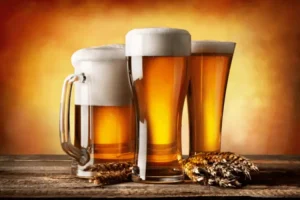
Clients at Carolina Center for Recovery will undergo a personalized journey through one of our highly effective treatment programs. Throughout treatment, clients experience the warmth and compassion of an entire staff that cares deeply about their success. For individuals diagnosed with Wet Brain Syndrome, long-term management focuses on supporting cognitive and neurological health and preventing further complications. This includes continuous nutritional monitoring, supportive care, and cognitive rehabilitation. Wernicke Korsakoff syndrome is a serious medical condition that requires proper diagnosis and treatment. Some Wernicke Korsakoff syndrome symptoms may be reversible if detected early and treated with thiamine supplementation, whereby thiamine is administered intravenously.
How Is Alcohol Misuse Connected To Wernicke-Korsakoff Syndrome?
- Mixing alcohol with unhealthy foods can further speed up the deficiency process, especially since, in addition to alcohol abuse and alcoholism, “wet brain” can also be the result of severe malnutrition.
- Korsakoff psychosis, also called Korsakoff syndrome, is the late stage of Wernicke-Korsakoff syndrome.
- Your doctor will order tests to check your thiamine levels when attempting to diagnose wet brain.
- Left untreated, Wernicke Korsakoff syndrome will prove fatal in an estimated 20% of cases, while approximately 75% of wet brain patients will suffer permanent brain damage.
Wet brain syndrome, also known medically as Wernicke-Korsakoff syndrome (WKS), is a brain disorder caused by a severe lack of vitamin B1, also called thiamine. This vital vitamin plays a crucial role in nerve function and brain health. When the body doesn’t have enough thiamine, it can lead to permanent damage in the brain, causing a range of debilitating symptoms.
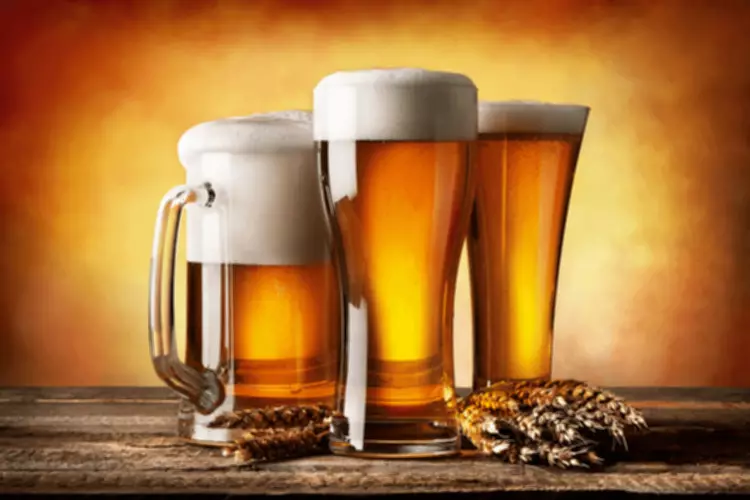
What is the Prognosis of Wernicke-Korsakoff Syndrome?
There are a million different opinions online, but when it comes to your life, health and wellness only peer reviewed reputable data matters. At Recovery Unplugged, all information published on our website has been rigorously medically reviewed by a doctorate level medical professional, and cross checked to ensure medical accuracy. You have all the ingredients necessary to pursue a full life without addiction. Avenues Recovery is a community-based drug and alcohol rehabilitation center with locations across the United States. Confusion, a symptom of Wernicke-Korsaskoff syndrome, may create panic for the alcoholic who is unaware of their surroundings in detox.
The Link Between Alcohol Abuse and Wet Brain Syndrome

It is important to have family and friends insist that the alcoholic stay and comply with the alcohol treatment program. Contact Porch Light Health today and take the first step toward a brighter, healthier way of life. Contact a treatment mush brain provider today to learn about the many types of treatment options available to you. If someone increases their drinking significantly, there could be a problem. Heavy drinking is a threatening practice which can easily transition into alcoholism or an AUD. If you or a loved one struggles with alcohol use and cannot cut back on drinking, there may be a danger of alcoholism.
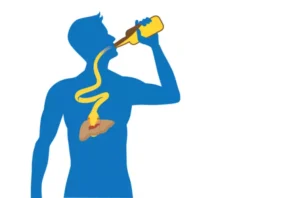
- Publicado en Sober living
Recovery success from drug treatment depends on 5 behavioral changes

Sleep is essential for shoring up impulse control and fostering good decision-making. Another vital element of care during recovery is relapse prevention—learning specific strategies for dealing with cravings, stress, setbacks, difficult situations, and other predictable challenges. Recovery involves rebuilding a life— returning to wellness and becoming a functioning member of society. Every person needs a comprehensive recovery plan that addresses educational needs, job skills, social relationships, and mental and physical health. Therapy may be critical to resolving underlying problems that made escape into substance use so appealing in the first place.
How Long Does it Take to Get Over an Addiction?

The afternoon is also an excellent time to review things you’ve learned in these sessions to better understand and apply them to your recovery journey. There is often a group session following breakfast led by a counselor or therapist that focuses on topics related to the treatment process, the 12-step program, addiction, and recovery. A significant focus during treatment is on achieving clarity about the issues, people, and surroundings in your life that have resulted in substance use becoming your primary strategy to cope with discomfort or stress. However, even if someone is ready and available to enter long-term rehab, there’s no guarantee that they’ll be able to find space in the program of their choice. For people suffering from a substance use disorder, the most important thing is to get the help they need.
Addiction Therapies
- If you’re on a medication-assistedtreatment regimen for an opioid use disorder, you may receive methadone or buprenorphine during outpatient detox.
- 60-day programs have the benefit of added time and support throughout treatment.
- Research and clinical experience have identified a number of factors that promote recovery.
- People in inpatient programs often undergo long-term treatment for relapse prevention.
Once you decide to seek help, the specialists at your rehab facility will diagnose your substance abuse problem. Depending on the specific addiction, treatment professionals will establish a blueprint for your rehab program. Long-term rehab programs can offer many benefits to people who want to achieve sobriety and maintain long-term recovery.
How can I find help for substance use and co-occurring mental disorders?
- By knowing triggers early, individuals can develop coping skills to handle them in healthier ways.
- To make sure that these symptoms aren’t too severe, there’s a good chance that small amounts of medications will be used to manage symptoms and help you avoid relapse.
- Most addiction treatment centers follow a continuum of care as recommended by trained behavioral health specialists.
- It involves safely managing the physical symptoms of withdrawal that occur when an individual stops using substances.
In comparison, short-term treatment programs last around three to six weeks. Keep in mind that inpatient rehab facilities provide clients with non-hospital settings while delivering care on a 24/7 basis. Treatment can focus on the social factors and psychological factors of a substance use disorder. During these programs, one gets over the physical effects of addiction through detoxification. After detox and inpatient care, the relapse prevention program is introduced to enable the individual to properly integrate into society.

Individuals can better manage their emotions and avoid relapse by identifying triggers and developing healthier responses. Learning to manage stress and emotions without resorting to substance use is a critical aspect of recovery. Developing effective coping skills can help https://ecosoberhouse.com/ individuals navigate the challenges of everyday life and reduce the risk of relapse. This treatment focuses on teaching skills to recognize triggers like stress or thoughts. By knowing triggers early, individuals can develop coping skills to handle them in healthier ways.
During the 30-day rehab time, the therapy consisting of physical and mental care is strategically aligned to help the individual heal. Generally, addiction treatment should not be rushed as recovery is a long-term process. Long-term inpatient treatment tends to be a good option for people who have struggled with addiction for extended periods of time and have not been able to maintain sobriety after previous treatment programs. There are different types of outpatient treatment programs you can enter. These programs are often available for people who don’t have severe substance use disorders or for individuals who have already completed a drug rehab program in an inpatient facility. CBT is offered in most residential treatment programs and is effective for aiding in the recovery from substance use disorders.
What Are the Symptoms of Pain and High Blood Pressure?
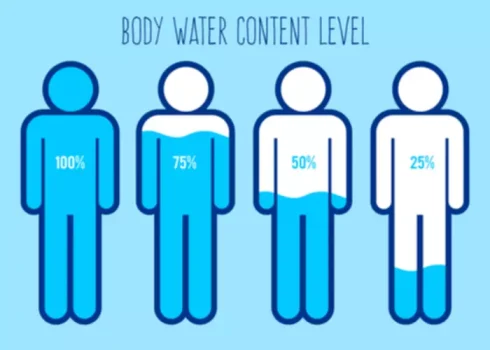
On the other hand, when chronic pain occurs, there are continuous elevations that weaken the body’s ability to normalize blood pressure. This can lead to more pain, hypertension, and the risk of heart disease. Pain is a response from the involuntary nervous system used to protect the body from harm. No matter what type of pain occurs, the nervous system uses the same mechanisms how long is drug rehab to relieve it. Still, the hope is that her brain-imaging studies will bear fruit that leads to a better understanding of long COVID and new treatment methods. In 2022, a Yale study by Arman Fesharaki-Zadeh, MD, PhD, found promise in treating brain fog through a combination supplement of NAC and guanfacine — the latter developed by Yale neuroscientist, Amy Arnsten, PhD.
Drugs and Alcohol Recovery Timelines
People who attend outpatient treatment can live at home during the recovery process, making maintaining certain responsibilities possible. These programs are generally considered to be less intensive than inpatient treatment programs. Different treatment facilities utilize different approaches throughout the course of a 60-day stay in drug rehab. Medication, individual treatment, counseling for families, and social therapy are often used in conjunction with one another while the precise mix depends on the unique circumstances and requirements of each client. Twelve-step programs are an alternative treatment option that is often available in certain 60-day drug rehab programs.
Paxlovid, Vitamin Supplements Show Promise With Long COVID
I met a lot of great people and learned how to change my old behaviors on a daily basis. When researching which rehab options, consult your insurance provider to find out what kind of coverage is available. Get professional help from an online addiction and mental health counselor from BetterHelp.
- These facilities provide24/7 monitoring and are able to address complications of withdrawal immediately if they occur.
- People who have been using drugs for years usually require more intensivetreatment than people who have been addicted for a few months.
- Our relapse prevention therapy program empowers you with the strategies and skills to maintain sobriety and navigate daily challenges.
- Self-medicating with substances, like drinking or taking drugs to treat symptoms of anxiety or depression, is another reason to consider rehab.
- Clients who spend a short amount of time in drug rehab often benefit from continuing their therapy in an outpatient environment.
- Publicado en Sober living
Wine Addiction Symptoms: Is Drinking Wine Alone Dangerous?
Heavy drinking causes health problems — regardless of the type of beverage. Chronic alcohol abuse can wreak havoc on your body and brain, increasing your risk of many diseases. Many different subtypes of alcohol dependence exist, characterized by alcohol cravings, inability to abstain or loss of self-control when drinking (71).
Alcoholic blackouts happen when you consume too much alcohol too quickly. They don’t happen to everyone, and the relationship between blackouts and addiction isn’t clear. In this interview, we speak with Jack O’Meara, co-founder and CEO of Ochre Bio, a pioneering force in liver disease treatment. O’Meara shares insights into Ochre Bio’s innovative RNA therapies, their approach to tackling liver disease, and the company’s vision for the future. For individuals above 50 years, 19% and 27% of deaths attributable to alcohol were caused by cancer. Alcohol also inhibits folate by competitive inhibition, leading to higher rates of colorectal cancer.
What Other Complications Could Wine Cause?
However, when it comes to heavy drinking and binge drinking, your risk rises (53, 54, 55, 56). While alcohol intoxication is only temporary, chronic alcohol abuse can impair brain function permanently. However, moderate drinking may have benefits for brain health — especially among older adults. Understanding the treatment options for alcohol addiction is just the first step in unraveling the role of wine in addiction. It is essential to explore how wine specifically affects individuals and whether it has the potential to become addictive. Additionally, we explore the signs of wine addiction, empowering you to recognize and address any concerning behaviors.
- From the vineyards of France to the cellars of Italy, wine has become a symbol of refinement and elegance.
- Increased wine consumption can result in an elevation in blood pressure and an increased likelihood of developing cardiovascular diseases.
- Drinking small amounts — especially of red wine — is linked to various health benefits.
It is worth noting that wine, when consumed in moderation, can actually have health benefits. Studies have shown that moderate wine consumption, particularly red wine, may have positive effects on cardiovascular health due to its antioxidant properties. https://ecosoberhouse.com/ However, it is important to remember that moderation is key and excessive alcohol consumption can have detrimental effects on our health. The most important difference between wine addiction and alcoholism is the type of alcohol consumed.
Wine or beer? The differing effects of alcohol on mood
The average alcohol level of wine is between 11 and 13%, though different varieties may have an ABV of over 20% on the high end and less than 6% on the low end. Your therapist can also help you identify and manage any challenges that contribute to your drug use (such as stress, grief, or mental illness). Studies suggest that a compound called resveratrol in wine has anti-inflammatory properties and may benefit health (11). Many foods have the power to reduce inflammation, and wine is thought to be one of them.
Finally, we provide guidance on responsible wine consumption, ensuring that you can savor this age-old indulgence without falling prey to its addictive clutches. Wine addiction is a serious condition that can cause serious health complications and financial difficulties. It is important to recognize the signs of wine addiction and to seek treatment if you or someone you know is struggling with an addiction to wine. With the right treatment, people with wine addiction can find lasting recovery. Alcoholism is a chronic and progressive disease that can lead to severe physical and psychological consequences. While wine is generally considered to be safer than other forms of alcohol, it can still lead to alcoholism if consumed in excessive amounts.
Post-COVID Regulations and Telemedicine Addiction Care
If you’re wondering if you’re drinking too much wine, there are a few signs to look out for. If you find that you’re drinking more wine than before, or that you need to drink more to feel its effects, it’s a sign that your body is becoming tolerant to alcohol. If you’re concerned about your drinking, is wine addictive it’s important to talk to a doctor or other medical professional. They can help you assess your drinking habits and provide you with resources to help you cut back or quit if necessary. When someone drinks regularly, their body becomes used to the presence of alcohol, causing them to crave it.
Alcoholism and alcohol abuse of any kind can cause serious complications and health problems and must be addressed and treated. If you’re addicted to wine and suddenly quit drinking alcohol, you’ll likely experience withdrawal symptoms. During medical detox, doctors help you give up wine gradually, which reduces your risk of withdrawal symptoms. It is very easy to become addicted to wine consumption, and wine addiction symptoms are sometimes very subtle until they become an issue. The knowledge of how to spot a potential alcoholic will help to prevent serious consequences.
Learn more about the long-term effects of drinking wine every day and how to stop drinking wine. While moderate consumption of wine may not be addictive, it can be habit-forming, and overconsumption can lead to alcohol dependency. It is important to be aware of the physical and psychological effects of alcohol consumption, as well as the signs of alcohol dependence. If you or someone you know is struggling with alcohol dependence, it is important to seek help.
- Publicado en Sober living
Genetic Influences on the Development of Alcoholism PMC
There are gene variations that could predispose a person to mental illnesses like depression and schizophrenia. People with mental illness are more prone to turn to alcohol as a coping mechanism. Genetic diseases, on the other hand, are illnesses that are caused by mutations in the person’s DNA. The GABRB1 gene is linked with gamma-aminobutyric acid (GABA) production. ADH1B gene, also known as the discomfort gene, plays a vital role in how the body responds to alcohol.
- The journal Nature Reviews Gastroenterology and Hepatology reports that several genes have been isolated as potential contributors to the hereditary nature of alcoholism.
- Learned behaviors also affect how a person views alcohol later in life.
- Therefore, genes alone do not determine whether someone will develop AUD.
- If someone has a mutation in this area and does not produce enough GABA while sober, they are likelier to abuse alcohol to feel better.
Genes that affect alcohol consumption, including those noted above that affect the
very heavy consumption that is a key aspect of AUDs, can affect the risk for a
disease caused in part by alcohol29. They may increase the overall risk by increasing drinking, or
reduce risk by reducing drinking. Some alleles that reduce heavy drinking can,
nevertheless, increase risk for disease in the subset of individuals who drink
heavily despite having them. The more risk factors a person has, the greater the chance of developing an alcohol use disorder or addiction. There are hundreds of genes in a person’s DNA that may amplify the risk of developing an alcohol use disorder. Identifying these genes is difficult because each plays a small role in a much larger picture.
Is AUD genetic?
Many factors contribute, however, to a person becoming an alcoholic. It has been known for a long time that alcoholism is partially hereditary, but also that environment, mental states, peer influence, self-medication, stress, and countless other factors contribute to alcoholism. It’s relatively https://accountingcoaching.online/drinking-at-workplace-work-alcoholism-signs/ easy to see how certain life situations could play a role in someone’s developing an alcohol dependency. A hectic life, peer pressure, high stress… alcohol has been an unfortunate place to turn under these conditions. However, pinpointing the genetic aspect of alcoholism has been a rocky road.
Genetic disorders are diagnosable conditions directly caused by genetic mutations that are inherited or occur later in life from environmental exposure. Your genetic risk refers to the likelihood that specific genes or genetic variants passed down to you will lead to a particular condition. Your genetics can influence how likely you are to develop AUD, but there’s currently no evidence of a specific gene that directly causes AUD once you start drinking.
How Do Genes Affect the Brain and Addiction?
For instance, the ADH1B gene, commonly studied in association studies, has been linked to the brain’s reward pathways. Researchers from the IU Alcohol Research Center used animal models to explore the genetics of alcohol use disorder. Analyzing 3 billion DNA base pairs across 70 animals, they identified genes linked to drinking behaviors. The National Institute on Alcohol Abuse and Alcoholism (NIAAA), a subset of the government’s health-focused .gov entities, has been at the forefront of alcohol research. Their mission is not just to understand the genetics of alcohol use disorder but also to provide resources and support for those struggling with substance abuse.
NIAAA has funded the Collaborative Studies on Genetics of Alcoholism (COGA) since 1989, with the goal of identifying the specific genes that influence alcohol use disorder. In addition, NIAAA funds investigators’ research in this important field, and also has an in-house research emphasis on the interaction of genes and the environment. NIAAA is committed to learning more about how genes affect AUD so that treatment—and prevention efforts—can continue to be developed and improved. Scientists have found that there is a 50% chance of being predisposed to alcohol use disorder (AUD) if your family has a history of alcohol misuse. If there’s a history of alcoholism in the family, you have a higher risk of developing AUD. The more close relatives suffer from this condition, the higher your risk.
Genetics and Alcohol Tolerance
NIAAA reports that around half of the risk of alcoholism can be linked to genetics, meaning that the disease is considered to be at least partially hereditary and can run in families. This does not mean that just because you have a parent or sibling who struggles with alcoholism, you will, too. It just means that there may be certain risk factors, or genes, involved. Genetics and family history are the most correlated with risk of AUD; in fact, genetic risk is about half of the problem, while family history is the other half. Certainly, genetics are passed down through families, but family history also includes the environment in which one was raised. Childhood abuse, parental struggles, and mental illness in close family members all contribute to the risk of developing an addiction to drugs or alcohol.
Because denial is common, you may feel like you don’t have a problem with drinking. You might not recognize how much you drink or how many problems in your life are related to alcohol use. Listen to relatives, friends or co-workers when they ask you to examine your drinking habits or to seek help. Consider talking with someone who has had a problem with drinking but has stopped. Our DNA dictates our physical characteristics (such as eye color) and also our behavioral characteristics (such as aggression).
First and perhaps foremost, most studies of
alcohol-related phenotypes have been small – hundreds or a few thousand
samples. Most robust associations that have been reported in common disease have
employed tens of thousands of samples and are now beginning to combine several
studies MASH Certified Sober Homes of these magnitude into even larger meta analyses. The alcohol research
community has begun to form larger consortia for meta-analyses and it is anticipated
that with the resulting increase in sample size the number of robust associations
will increase.
- Publicado en Sober living
Is Alcohol Impacting Your Relationship?
When discussing families, we are using the term broadly to refer to a broad range of kinship relationships. When discussing couples, we are referring to couples in intimate relationships regardless of marital or co-habiting status, and using the term “partner” to refer to either individual in the intimate relationship. However, where research findings apply to a more limited group (e.g., spouse versus partner) we use the correct term to delimit the population studied.
- Faith-based treatment can be applied to any spiritual belief and to most treatment modalities.
- Sometimes, people in early recovery needs a bit more support, supervision, or stability than what is available at home.
- The impact of having a family member or friend with a substance use disorder doesn’t simply stop once the individual is in treatment.
- Those who prioritize the needs of their partner above their own often suffer from mental health issues like depression and low-self esteem.
- This means taking good care of yourself and your family and leaving your loved one with full responsibility for his or her actions.
- This article reviews the conceptual and empirical literature on the impact of AUD on families, the role of the family in recovery from AUD, the role of family-involved treatment in fostering recovery, and issues related to specific populations.
All they will see is that your behaviour is changing in ways that they cannot process. There’s a phrase in the recovery world where people talk about having to “walk on egg shells”. This means that family members of an alcoholic aren’t sure how to behave around the person. Sometimes Mom may be in a good mood and the children love to sit and talk with her. But other times Mom has had too much to drink and when the children approach her, she lashes out and starts screaming at them.
How Alcohol Affects Family Relationships
A related question that warrants attention in the literature is learning about the circumstances under which partners and family members are well suited versus possibly inappropriate for conjoint therapies. For example, studies examining family-specific interactive behaviors that increase or mitigate known precipitants to drinking and relapse risk, such as heightened craving, are warranted. Similarly, this literature can be improved by examining thoughts, behaviors, and emotions that acutely predict both positive and negative AUD treatment outcomes, including those that occur within and between treatment sessions. There is an abundance of new opportunities to integrate emerging novel scientific methods—such as multimodal, multidisciplinary assessment and intervention approaches—into research focused on couples and families with a family member with AUD.
Alcohol addiction does tend to run in families, but that’s not why it’s called a family disease. It has that reputation because one person’s addiction to alcohol affects the entire family. Every family’s experience is different, yet most families make efforts to remain connected—and to continue to be a functioning system—even when a SUD is brought into the family. Not all efforts are successful, but families undoubtedly experience increased stress, distress, and conflict as they attempt to adapt to a person with a SUD.
Find Treatment For A Family Member With Alcoholism
Sometimes it is classified as Alcohol Use Disorder and can be described as being mild, moderate, or severe. In response to questions from our members, we have some how does alcohol affect relationships tips for people who are going through this very difficult conflict. First of all, it is a really common issue and one that can be daunting, to say the least.
- It hinges on collaboration among the public, private, and philanthropic sectors, between our Administration and the legislature, across all levels of government, and it’s Hoosier-wide in every way,” Gov. Holcomb said.
- Substance abuse counselors, family therapists, marriage counselors, spiritual leaders, school counselors, and intervention specialists are a few of the guides who can help families cope with the effects of addiction and mend broken bonds.
- While not every family struggling with a SUD will go through these experiences, the model demonstrates the general difficulty that SUDs pose for families.
- No significant sociodemographic differences were found based on methods of data collection.
- Publicado en Sober living
- 1
- 2